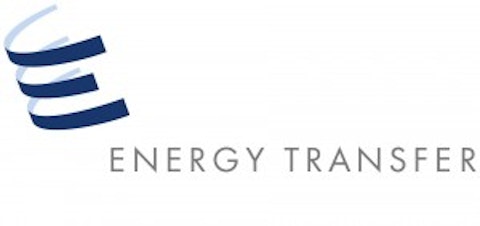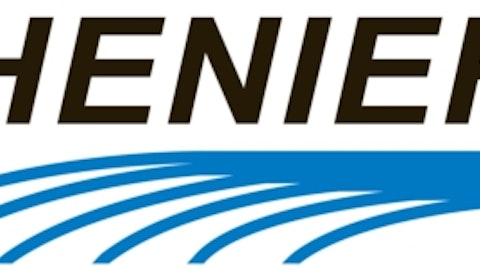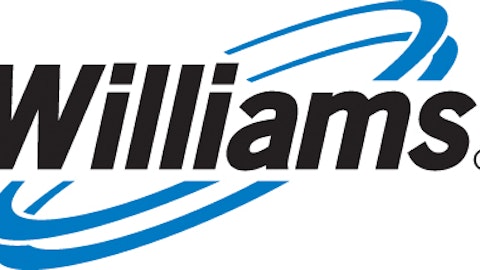
Many of the companies we invest in produce something that we can experience to some extent in our everyday lives. If we want to get a taste for the quality of a Ford Motor Company (NYSE:F) automobile, for example, we can go drive one. We can walk into an Apple Inc. (NASDAQ:AAPL) store, drink a Starbucks Corporation (NASDAQ:SBUX) coffee, or open a brokerage account at E TRADE Financial Corporation (NASDAQ:ETFC). But the vast majority of us cannot go stand next to a pipeline or inspect a natural gas liquids fractionation facility. When it comes to our energy investments — especially our midstream investments — we need to find another way to complete our investment picture.
Enter our federal filings.
Most investors are familiar with the SEC’s EDGAR database, so we won’t focus on that today; instead, I’ll take a look at three other online databases that can provide meaningful information for energy investors.
Lobbying Disclosure Act database
For once, the Senate has made something easy on us. The companies and associations behind our investments are required to file Lobbying Disclosure Act forms on a quarterly basis, if and when representatives have lobbied on their behalf. The resulting database is online here and easily searchable.
You can make your search as complicated as you’d like, but for most purposes merely checking the “Client Name” box, and searching for your company will yield useful results. Let’s investigate Kinder Morgan Energy Partners LP (NYSE:KMP). After keying in the partnership name, our search yields a scant six results dating back to 2007.
However, three of those results are from the first quarter of this year and thereby warrant a closer look. In the two registration filings submitted for the first quarter of this year, Kinder Morgan Energy Partners LP (NYSE:KMP) has shown us that it will likely engage in lobbying for “Federal funding for the remediation of uranium contaminated property near Tuba City, Arizona.”
Unit holders are free to speculate on what Kinder Morgan may intend to do near Tuba City, but the partnership does not currently have any assets that far north in Arizona. The existence of this filing and others like it should not alter your investment thesis, but it may jump-start your research in a way a news article or income statement would not.
Federal Energy Regulatory Commission
Moving on to another federal agency, the one known colloquially as FERC, but often described in legal documents as “the” FERC.
FERC filings can actually be exciting, especially in the wild world of pipeline approval, construction, reversals, and the like. The trick here is that midstream outfits like Energy Transfer Partners LP (NYSE:ETP) and Enterprise Products Partners L.P. (NYSE:EPD) often have LLCs that manage certain systems, or individual pipelines. Most times you can still search by the name of the partnership, but it can also be beneficial to search terms like “Trunkline” or “Seaway”, in the case of the aforementioned entities.
Let’s do just that and see what turns up. I’ve selected the “general search” option here, and typed the word “Trunkline” into the text search field. There are many, many documents that come up as a result, with varying descriptions:
- “Letter order accepting Trunkline Gas Co, LLC’s 4/30/13 filing of tariff records to update system maps in accordance with the requirements of Section 154.106 of the Commission’s regulations under RP13-856”
- “Letter order accepting Trunkline LNG Company, LLC’s 3/1/13 filing of a cost and revenue study to comply with the Commission’s Order Granting Authorization under Section 3 of the Natural Gas Act etc under RP13-670″
- “Motion to Intervene of Joint Protestors under IS13-265”
Often when a company intervenes, it is asking FERC to step in and act on its behalf. Most times, it is a request by a company for FERC to step in and enforce an action on its behalf. Enterprise filed such a motion when it was having problems with speculators on its Seaway system. Similarly, Enbridge Inc (USA) (NYSE:ENB) filed a motion to intervene in an effort to control the level of hydrogen sulfide in the crude oil entering its Berthold terminal in North Dakota.
The beauty of the FERC database is that you can set up email notifications once you identify a docket that sparks your interest, which means you do not have to spend an hour every single Saturday combing through all of this information. Let the database work for you.
Pipeline & Hazardous Material Safety Administration
PHMSA is one of the worst databases out there for specific company information related to pipeline spills. However, it is one of the best for industrywide data, including statistics on pipeline incidents and costs, and spills by alternative transportation methods. It also has charts, and who doesn’t love a good chart every now and then?

Additionally, you can use this page to research spills not related to pipelines. For example, you can research spills by train, barge, truck, or plane. When we use this particular form to search for information on Enbridge, we do not find anything related to the 2010 oil spill in Kalamazoo, but we do find four other incidents dating back to 2005, including one spill from last year that cost more than $473,000 in damages. Again, any particular finding may not influence your investment thesis one bit, but when patterns emerge it matters.
Foolish takeaway
The information you find in these databases may not make or break your investment thesis on its own, but it should give you a better picture of your company as a whole. And there is certainly a chance that what you read in your company’s filings may point you in the direction of other issues that may in fact make or break your investment decision.
The article 3 Great Sources for Energy Investors originally appeared on Fool.com.
Fool contributor Aimee Duffy owns shares of Ford and Starbucks. For more energy information, follow her on Twitter @TMFDuffy.The Motley Fool recommends Enterprise Products Partners L.P.
Copyright © 1995 – 2013 The Motley Fool, LLC. All rights reserved. The Motley Fool has a disclosure policy.


